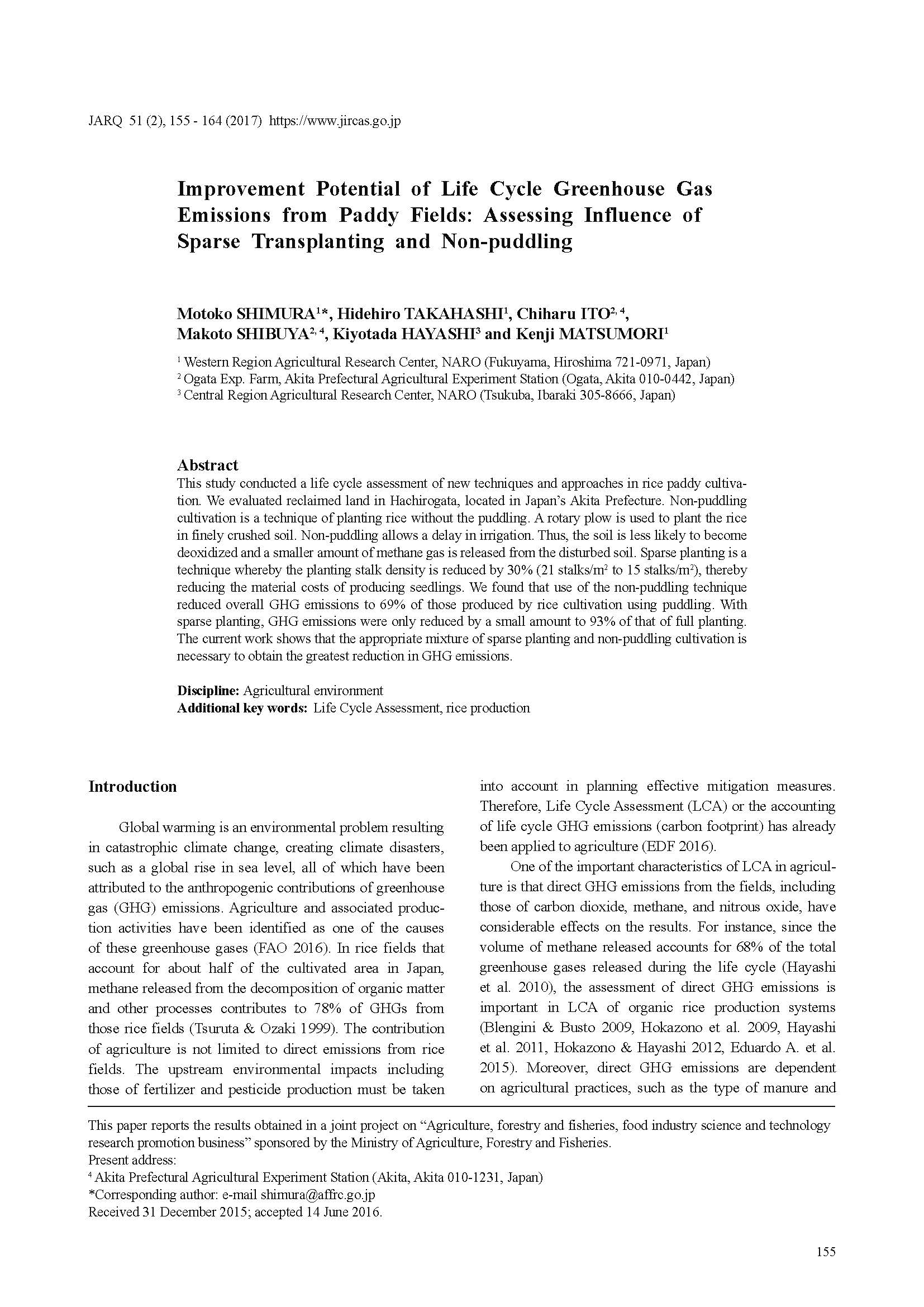Improvement Potential of Life Cycle Greenhouse Gas Emissions from Paddy Fields: Assessing Influence of Sparse Transplanting and Non-puddling
| ISSN | 00213551 |
|---|---|
| NII recode ID (NCID) | AA0068709X |

This study conducted a life cycle assessment of new techniques and approaches in rice paddy cultivation. We evaluated reclaimed land in Hachirogata, located in Japan’s Akita Prefecture. Non-puddling cultivation is a technique of planting rice without the puddling. A rotary plow is used to plant the rice in finely crushed soil. Non-puddling allows a delay in irrigation. Thus, the soil is less likely to become deoxidized and a smaller amount of methane gas is released from the disturbed soil. Sparse planting is a technique whereby the planting stalk density is reduced by 30% (21 stalks/m2 to 15 stalks/m2), thereby reducing the material costs of producing seedlings. We found that use of the non-puddling technique reduced overall GHG emissions to 69% of those produced by rice cultivation using puddling. With sparse planting, GHG emissions were only reduced by a small amount to 93% of that of full planting. The current work shows that the appropriate mixture of sparse planting and non-puddling cultivation is necessary to obtain the greatest reduction in GHG emissions.
| Date of issued | |
|---|---|
| Creator | Motoko SHIMURA Hidehiro TAKAHASHI Chiharu ITO Makoto SHIBUYA Kiyotada HAYASHI Kenji MATSUMORI |
| Subject |
Life Cycle Assessment rice production |
| Publisher | Japan International Research Center for Agricultural Sciences |
| Available Online | |
| NII resource type vocabulary | Journal Article |
| Volume | 51 |
| Issue | 2 |
| spage | 155 |
| epage | 164 |
| DOI | 10.6090/jarq.51.155 |
| Rights | Japan International Research Center for Agricultural Sciences |
| Relation | : J-STAGE |
| Language | eng |
